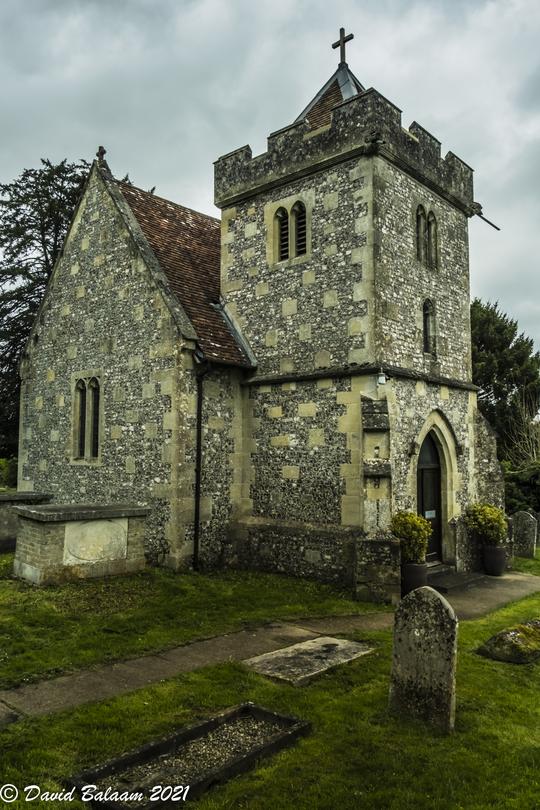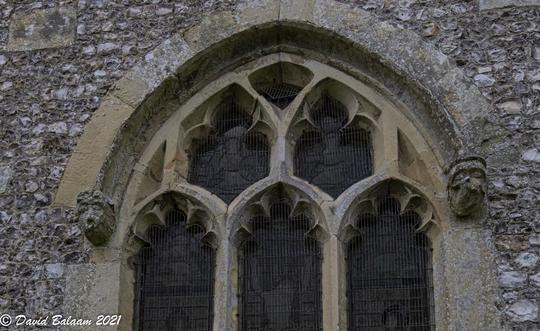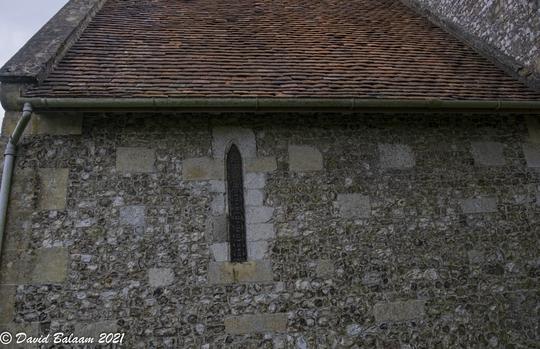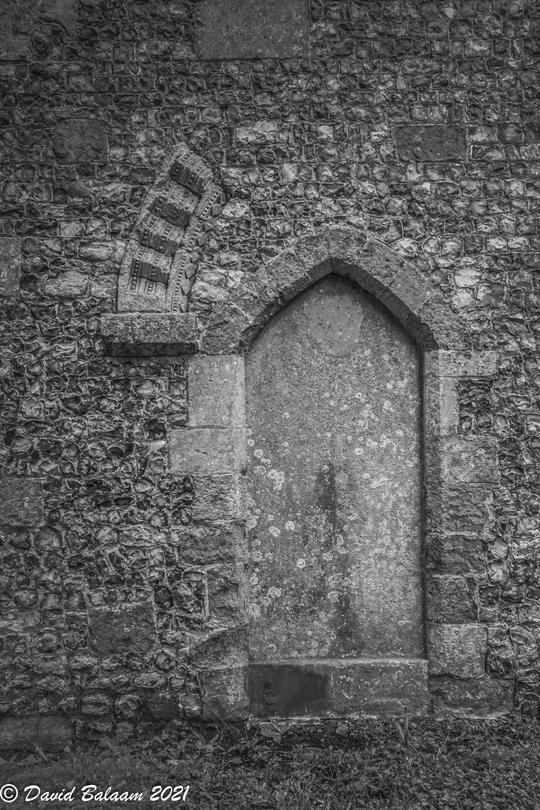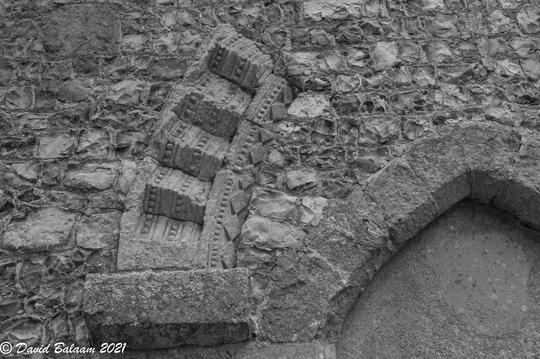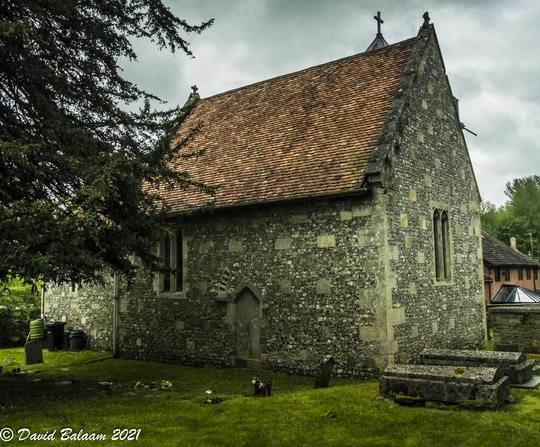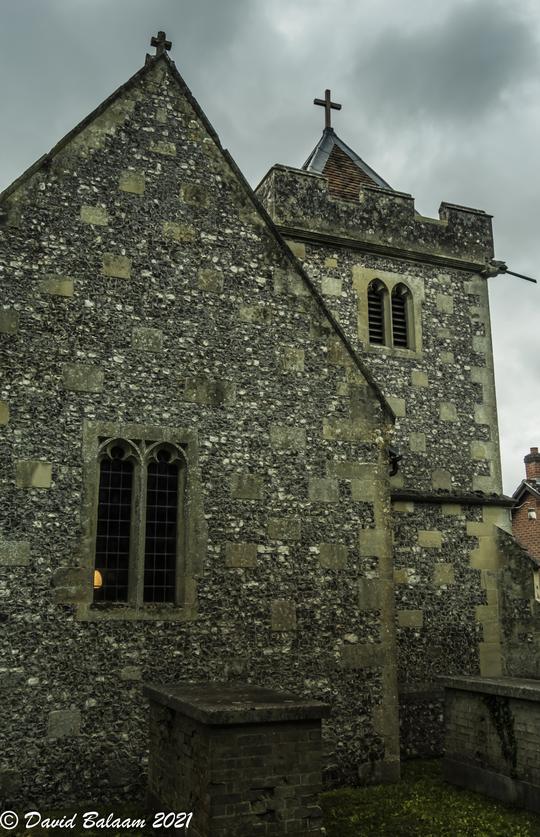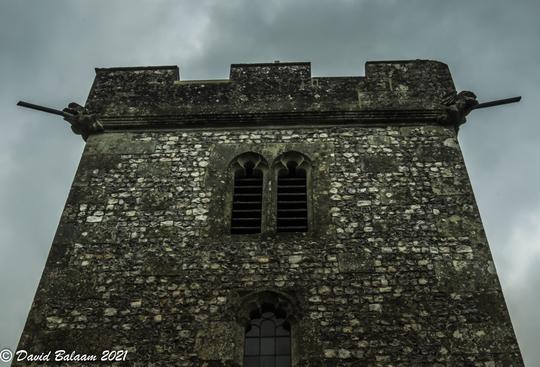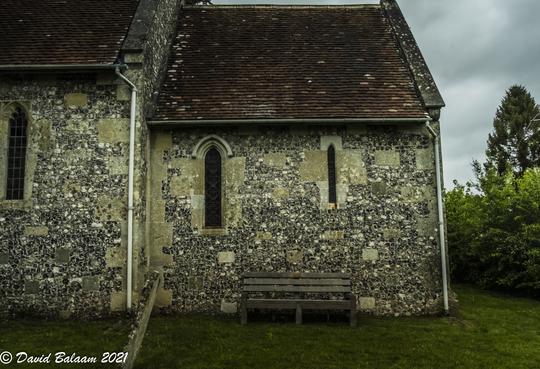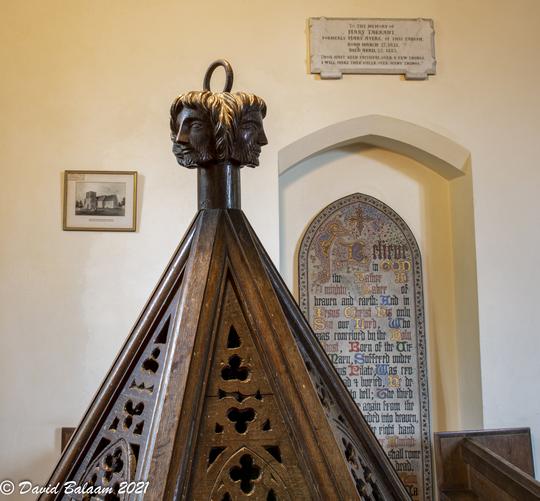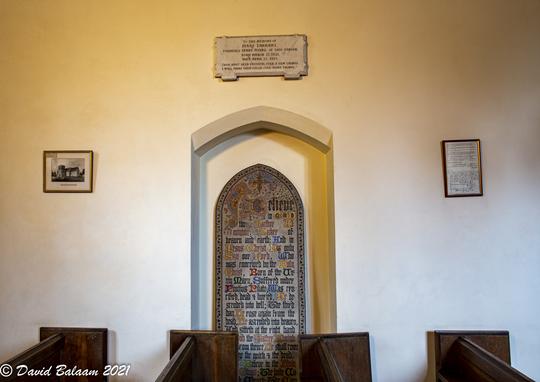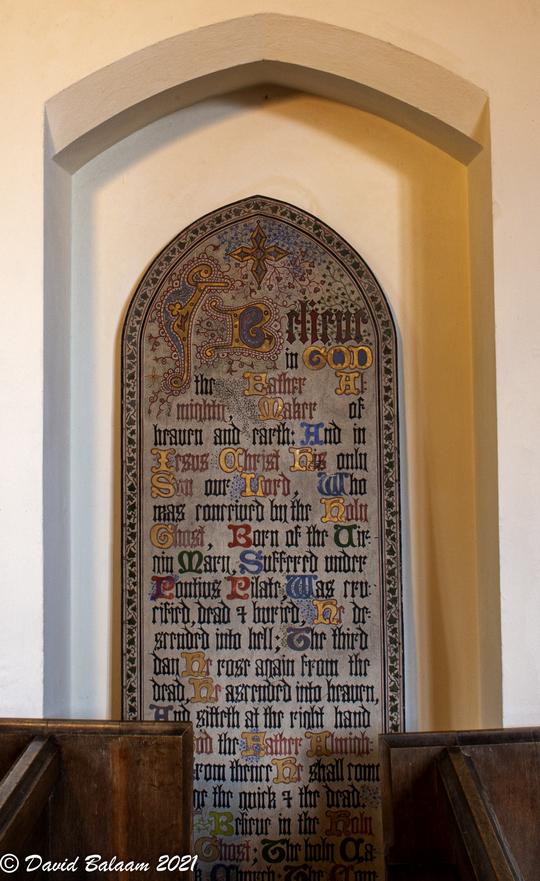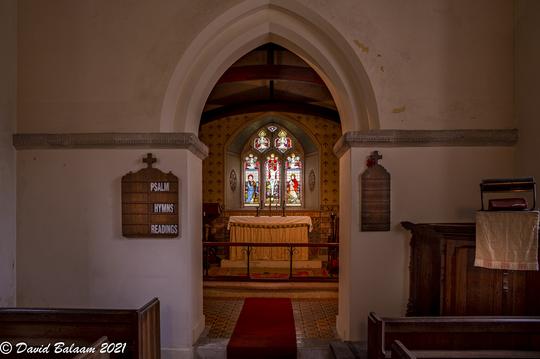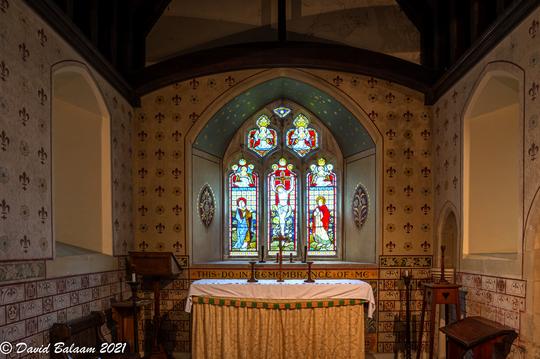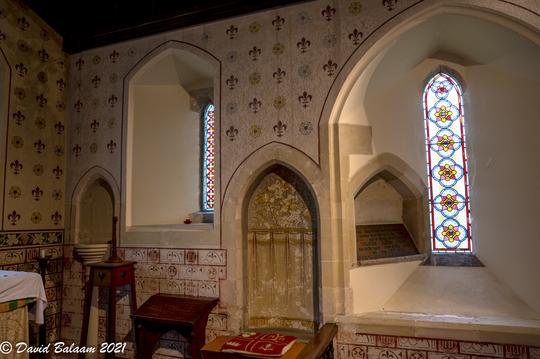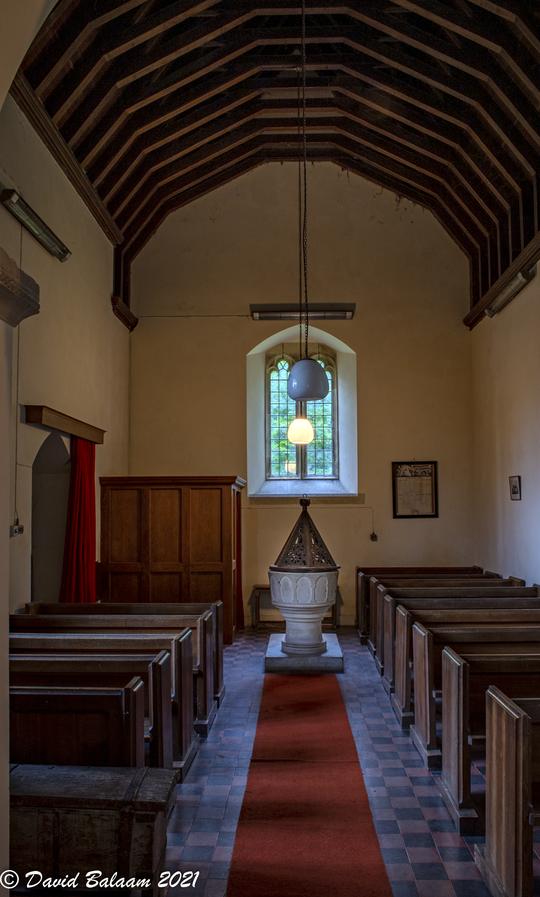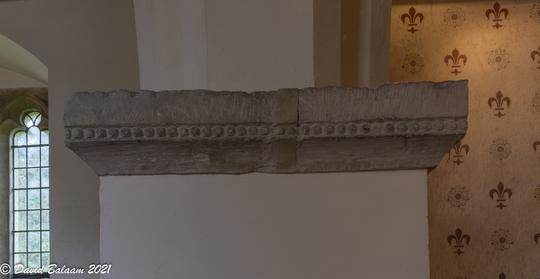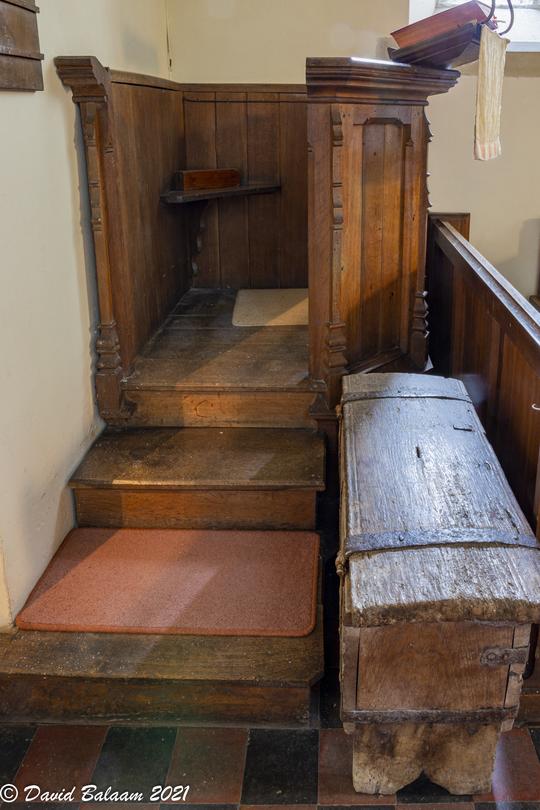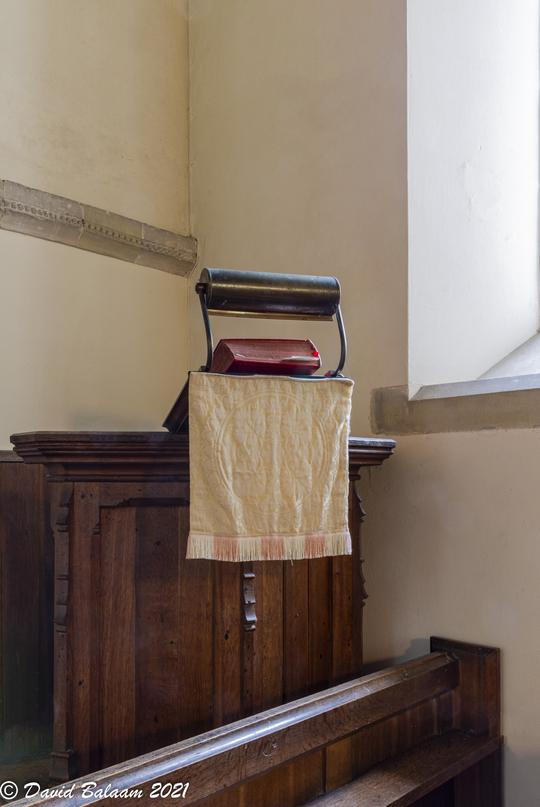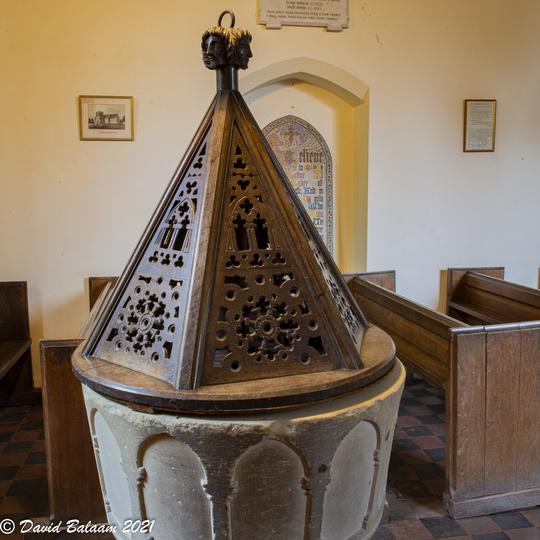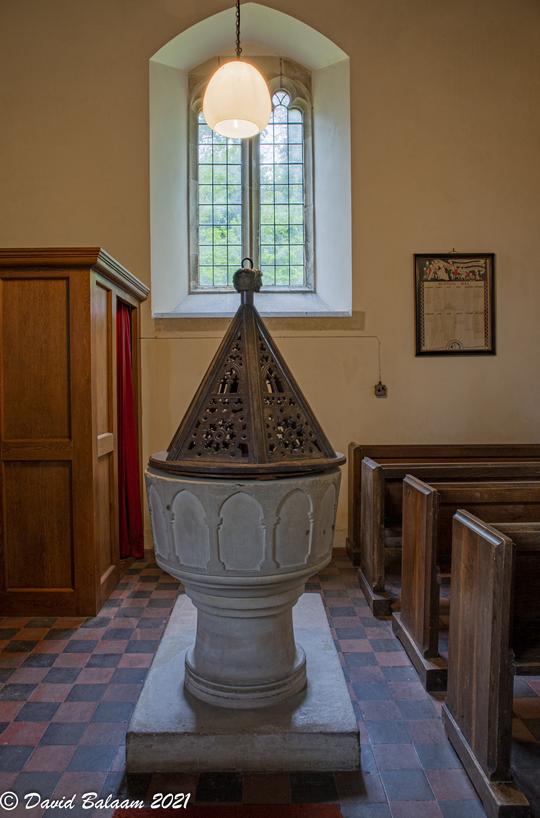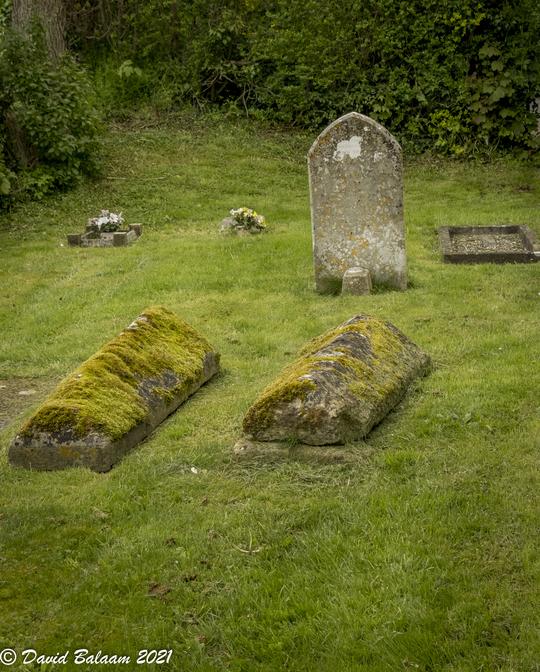St John the Baptist, Allington
The earliest parts of the church date from the 12th century, but only fragments of this building remain, in the imposts of the chancel arch (rebuilt in the 19th century) and a portion of stonework from a Norman doorway, reset in the north wall. Most of the church was rebuilt between 1847 and 1851, the architect being the "priest-architect" Fr William Grey; the new building scrupulously reproduced the plan and details of its 13th-century predecessor, except that the timber belfry was replaced by masonry. The church is constructed in knapped flint and limestone with limestone dressings. The tower is in two stages with angle buttresses and a pyramidal tiled roof. In the upper stage are two-light bell openings, and at the summit is a crenelated parapet with gargoyles. The nave has doors on the north and south sides, the north door containing the Norman fragments. The wall of the nave is rendered and colour-washed; it has a 19th-century wagon roof. The interior of the chancel has stencil and freehand decoration executed in 1876 by Heaton, Butler and Bayne. This is in memory of Revd Fulwar William Fowle, rector of the church for over 60 years. The stained glass in the east window is by Heaton, Butler and Bayne, and depicts the Crucifixion. The font dates from the 19th century and is a replica of the 12th-century original. The pyramidal pierced cover is from the 17th century. The pulpit is in oak, and dates from the 19th century. Revd Thomas Fowle, vicar between 1793 and 1797, who was engaged to Cassandra Austen, sister of Jane, but who died before he could marry her. Fowle died of yellow fever in the West Indies, trying to raise sufficient funds for their marriage. In the churchyard are two structures that have been listed at Grade II. One of these is a pair of limestone coffin tombs dating from the 18th century, one of them inscribed with the date 1728; the date on the other is illegible.
